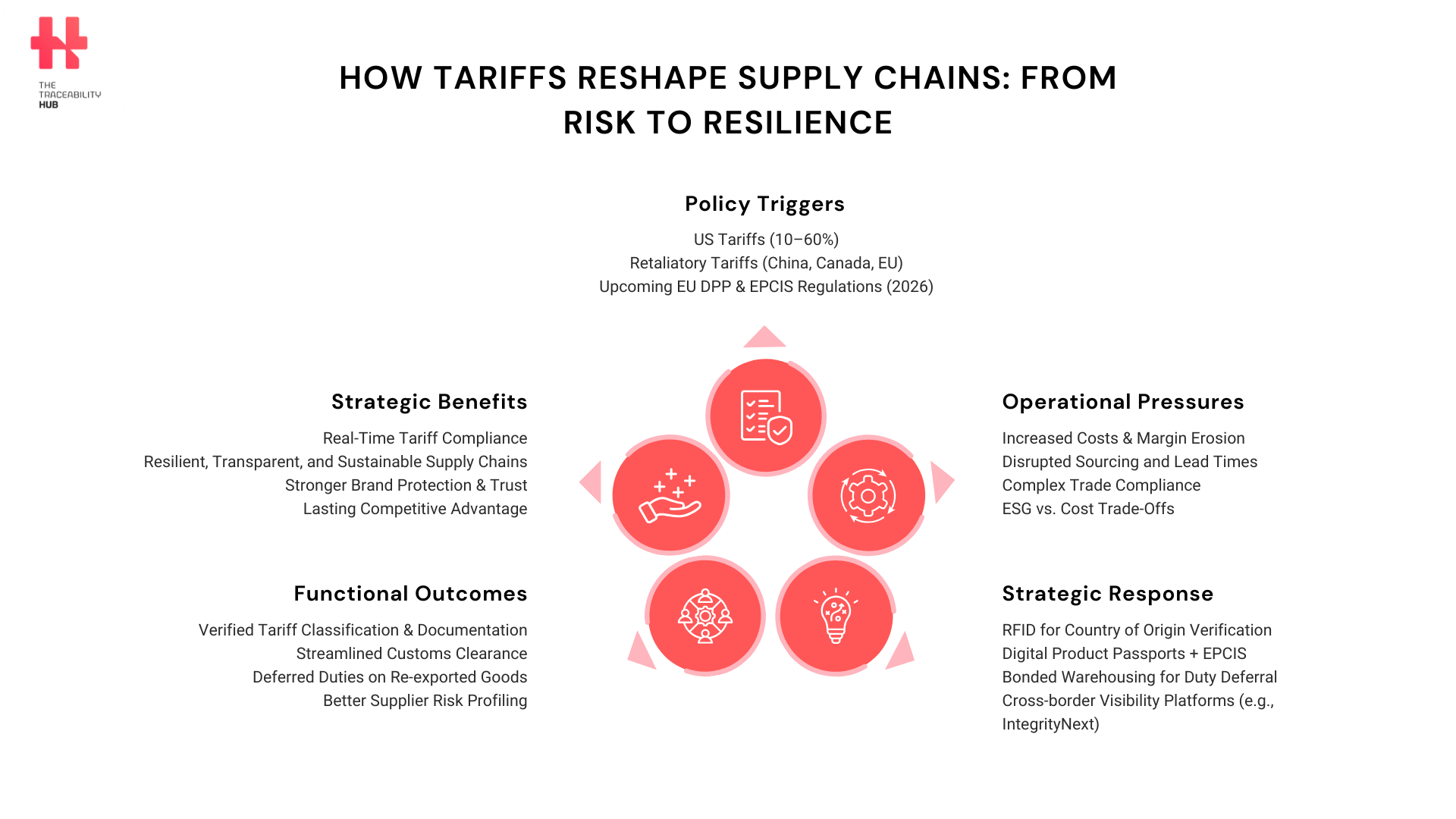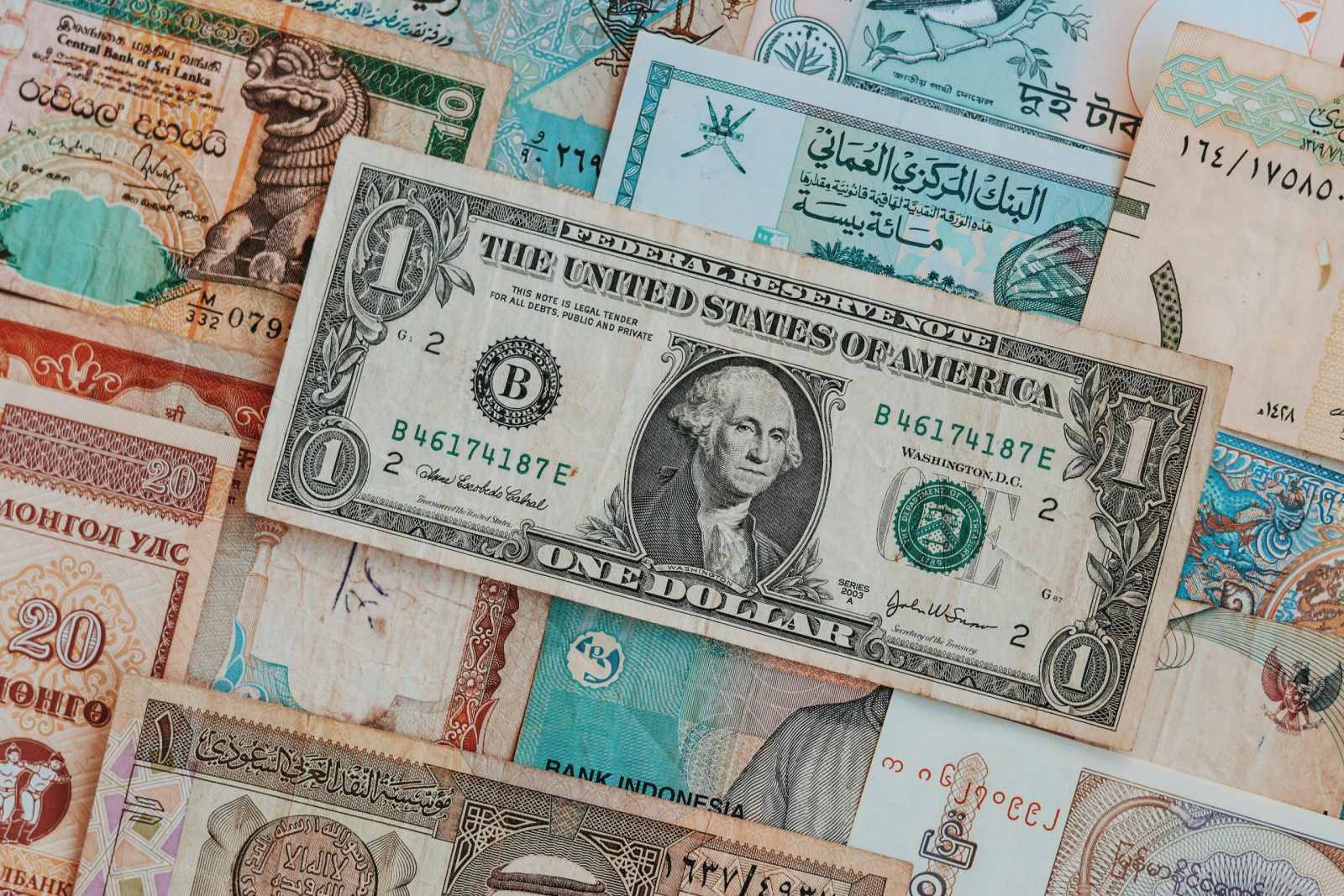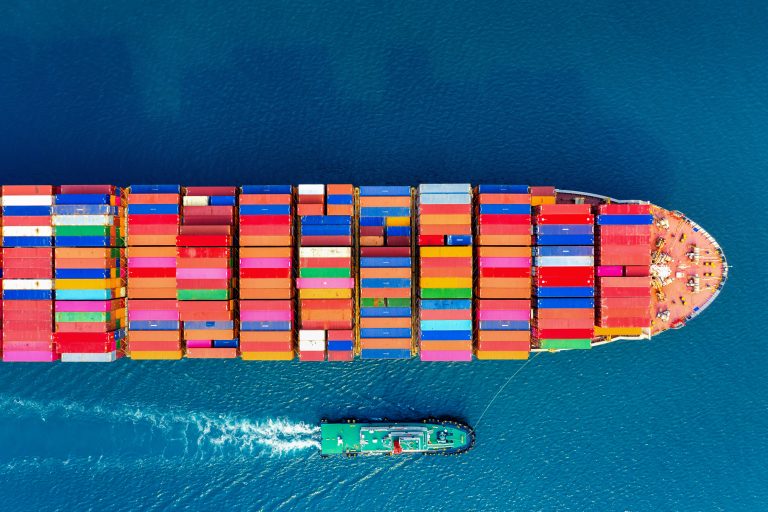Tariffs and Trade Tensions: Why Visibility Is Now a Strategic Necessity
Businesses face a crucial question in today’s volatile global trade world: what do tariffs mean for their operations? A tariff is a tax or duty a government imposes on goods imported from other countries, paid by the importer. These government-imposed taxes on imported goods substantially affect pricing, sourcing, and supply chain strategies worldwide. President Trump’s pledge to impose universal tariffs of 10-60% on all U.S. imports in 2024 will affect $4.2 trillion in goods and services purchased from abroad.
Tariffs serve as powerful financial instruments that generate substantial government revenue, with federal collections expected to reach $2.5 trillion in individual income tax revenues this year. Business operations face complex challenges that demand strategic responses. The fashion industry illustrates this perfectly – more than 80% of fashion goods sold in the U.S. come from imports. Apparel imports exceeded $75 billion in 2023, which makes tariff transparency crucial for global trade dynamics. Many companies have implemented “tariff pass-through” pricing models or moved production to Southeast Asia. This region now accounts for 33% of total sourcing value in the apparel industry. State-of-the-art visibility tools, like RFID technology or smart labels, help businesses guide these evolving tariff situations with greater precision and confidence.
Key Drivers in Global Trade Transformation

Understanding Tariffs in the Context of Global Trade
Tariffs are the foundation of international trade regulation. Governments impose these customs duties on imported goods. Unlike what we mentioned earlier about their unpredictable nature, tariffs work as a well-laid-out economic tool with predictable effects. These taxes give local products a price advantage over imports and help governments collect revenue.
A key concept here, crucial for origin determination and customs compliance, is the tariff shift. What is tariff shift highlights a significant aspect of rules of origin, guiding how goods acquire their national identity for duty purposes.
What Does Tariffs Mean in Economics and Business?
Importers pay tariffs as taxes when foreign goods enter a country. These taxes come in different forms: ad valorem tariffs (percentage of value), specific tariffs (fixed amount per unit), and tariff-rate quotas (increased rates after reaching import thresholds). These taxes create a gap between what consumers pay and what producers receive. This gap affects business revenue before it goes to workers and capital.
Businesses see tariffs as a key cost that shapes their pricing and market position. People often think these taxes target foreign businesses, but domestic consumers and businesses bear the real burden. Research shows tariffs hit lower-income households harder. The lowest income group loses about 1.37% of after-tax income while the top 1% loses only 0.95%. The tariff shift definition is crucial here, as it can influence these costs by defining the product origin rule.
Tariffs as a Tool for Industrial Policy
Tariffs have shaped protectionism and industrial growth throughout history. America’s first Treasury Secretary, Alexander Hamilton, created the “infant industry” argument. He believed temporary tariff protection could help domestic industries grow until they could compete globally. Modern trade policy still follows this viewpoint, using tariffs to protect growing sectors from foreign competition.
On top of that, tariffs help deal with unfair trade practices. They can fight against subsidies through countervailing duties or curb predatory pricing through antidumping measures. The protection of domestic steel manufacturing shows how tariffs can offset market distortions from foreign subsidies. This often involves applying the tariff shift rule of origin to determine if a product has undergone substantial transformation rule, crucial for manufacturing origin rules.
Impact of Tariffs on Trade Deficits and Manufacturing
Most economists agree that tariffs alone don’t work to reduce trade deficits. Lower imports from tariffs mean fewer dollars paying for those imports. This often leads to a stronger dollar that makes exports more expensive. Both imports and exports drop while the deficit stays about the same.
Tariffs create a chain reaction throughout supply chain transparency. A National Association of Manufacturers survey found that 87% of small and medium-sized manufacturers might raise prices because of tariffs. One-third of them could slow down hiring. Economic forecasts paint a concerning picture. Recent tariff proposals could reduce long-term GDP by about 6% and wages by 5%. For tariff shift manufacturing, understanding how a change in tariff classification (CTH) impacts costs is vital.
How Tariffs Affect Supply Chain Decisions
Supply chain leaders must make tough choices as they deal with markets affected by tariffs. These decisions create ripple effects throughout global commerce that affect pricing, export opportunities, and sourcing decisions significantly. Businesses are now exploring how tariff shift works in trade to optimize their customs origin strategy.
Tariff changes have real impacts on multinationals and big companies’ sourcing and manufacturing. The visibility of the supply chain is therefore key to forecast and arrange on time geographic sourcing shifts to more convenient countries, to avoid longer lead times and cost increases.
Cost Pass-Through and Consumer Pricing
Business leaders face a crucial choice at the time governments impose tariffs – they can absorb costs, cut margins, or pass expenses to consumers. Recent studies show American consumers bore almost the entire cost burden during latest tariff implementations. The Budget Lab at Yale projects that automobile tariffs will push average vehicle prices up by 13.5% or $6,400 compared to 2024 prices. Economists at the Federal Reserve Bank of Boston estimate that a 25% tariff on Mexico and Canada, plus a 10% tariff on China, would push core PCE inflation up by 0.5 to 0.8 percentage points. This cost transfer varies by industry – China supplies nearly 80% of toys bought in America, making this sector especially sensitive to tariff changes. Businesses are increasingly seeking a tariff shift example to understand its practical application.
Retaliatory Tariffs and Export Risks
Trading partners respond with reciprocal actions after unilateral tariff impositions. China has pushed average tariff rates up to 125% and held back vital imports like rare earth minerals needed for semiconductors and advanced manufacturing. Canada has set 25% tariffs on autos, steel, and aluminum, along with other restrictions on consumer products. These counter-measures pose direct threats to U.S. exports, which make up about 11% of GDP in 2025. The impact reaches far – at least 2.6 million Americans work in sectors highly vulnerable to retaliatory actions from China, Canada, and the European Union. Navigating this requires a deep understanding of rules of origin, including free trade agreement rules of origin, and how the tariff shift can mitigate risks.
Currency Fluctuations and Import Sourcing Shifts
Changes in exchange rates reshape sourcing economics, though not in predictable ways. The dollar dropped 35% against a broad index of foreign currencies from 2002-2008, yet import prices barely moved. Research shows low exchange-rate effects on U.S. import prices (0.26 for all imports excluding oil, 0.18 for consumer goods). This happens because exporters often “price to market” by adjusting profit margins, set prices in the importing country’s currency, or use cross-border production with inputs in different currencies. Companies that import goods must carefully assess currency risks, especially when their home currency weakens against foreign currencies, which drives up procurement costs. This highlights the complexity of tariff shift customs in a volatile global market.
Traceability and Proof of Origin in Tariff Compliance
The business world faces a complex trade environment today. Companies must prove supply chain transparency and where their products come from to comply with tariffs and keep costs down. Or even decide to change supplier, because located in a more convenient country. Tariff rates keep changing worldwide, so businesses now use advanced tech and strategies to check product origins and manage their tariff expenses better. This includes applying the correct tariff classification rule and ensuring origin rule compliance.
How Tariffs Reshape Supply Chains: from Risk to Resilience

RFID for Country-of-Origin Verification
Radio Frequency Identification (RFID) technology gives companies a powerful way for supply chain transparency and to trace and verify product origins. RFID tracks items through global supply chains from production to final sales. Traditional Certificates of Origin (COO) are legal documents that chambers of commerce or government agencies issue.
there are several technologies and IoT available: geo-locators, environmental sensors, customizable tags, physical/digital seals, transponders, RFID, with an immutable record-keeping with the Blockchain technology, when needed. With QR code or image recognition, or a direct NFC connection, it’s possible to get an immediate check of product authenticity and integrity, access to its history, characteristics and sustainability certifications.
Also a valuable tools for customs authorities who need to check goods’ origin and apply the right tariffs. This directly supports proving origin with tariff shift for robust customs compliance.
Digital Product Passports and EPCIS Standards
Digital Product Passports (DPP) reshape the scene of product lifecycle transparency. These digital records track detailed information about a product’s trip from raw materials to disposal. EPCIS (Electronic Product Code Information Services) standards, a GS1 standard to track visibility events in the value chain, help businesses share information about their products’ movement and status throughout supply chains.
EPCIS shows five key things:
- ObjectEvent
- AggregationEvent
- TransactionEvent
- TransformationEvent
- AssociationEvent
Therefore what products are affected, at the time events happened, where products were, why things occurred, and the product’s condition.
The new EPCIS 2.0 now handles sensor data, certification details, and makes things easier for developers. Tariffs still affect Digital Product Passport setup costs because components like RFID tracking tags face duties up to 25%. These technologies are integral for tariff shift trade compliance.
Bonded Warehouses for Deferred Tariff Payments
Bonded warehouses give businesses smart ways to manage tariff costs.
U.S. Customs authorizes these secure facilities to let businesses:
- Store imported merchandise for up to five years without paying duties right away
- Pay duties based on rates at the time goods leave the warehouse, which helps if tariffs drop
- Skip duties completely on merchandise that gets re-exported without entering U.S. commerce
Bonded warehouses also let companies clean, sort, and repack items without losing their duty-deferred status. These facilities help importers save money, especially when tariffs might go up. Companies can wait to pay until they actually need the products in domestic markets. This forms a critical part of the origin transformation process and customs origin strategy.
Balancing Tariff Strategy with Sustainability Goals
Tariff policy changes create tensions between compliance needs and green practices for global businesses. Rising trade barriers force companies to make tough choices that might undo years of environmental, social, and governance (ESG) progress. Understanding when does tariff shift apply is key to making these decisions.
Avoiding Trade-Offs Between Compliance and ESG
The Fair Labor Association’s brief on “The impact of tariffs on sourcing decisions” (February 2025) explains how supply chain disruptions from tariffs can hurt workers’ livelihoods and destabilize economies. Smart companies now build sustainability into their supply chains as both a values-driven initiative and a resilience strategy. Companies can adopt circular supply chains to reduce their dependence on tariffed virgin materials instead of seeing tariffs and sustainability as competing priorities. This illustrates how tariff shifts work in trade as a strategic tool.
Supplier Responsibility in High-Tariff Regions
Companies must use responsible purchasing practices when they source from high-tariff regions. Note that businesses should assess sourcing volumes and spot high-risk suppliers based on what they make, how many workers they have, and their production volumes. Companies should take these steps if they must leave a sourcing region:
- Give stakeholders six months to prepare
- Help suppliers provide fair severance to workers
- Ask local unions and civil society organizations for input
Using Visibility Tools to Support Green Sourcing
Visibility tools are vital to maintain sustainability in adjusted supply chains as regulations become more complex. Supply chain changes from tariffs affect a company’s data collection on value chain effects and can alter carbon disclosure timelines. Companies should invest in technologies that improve supply chain visibility for both compliance and sustainability. These tools are crucial for understanding when does tariff shift apply to new sourcing arrangements.
Integrity Next’s platform shows how visibility tools can spot ESG risks across 52 areas—including climate, labor rights, and corruption. The platform combines country, industry, and raw material risk data with automated updates. Companies can identify high-risk segments early and respond appropriately to ensure responsible procurement even as tariffs reshape global trade.
Guiding the Future of Tariff-Resilient Supply Chains
This article has shown how tariffs alter global trade relationships and supply chain strategies. Businesses face major challenges as tariffs affect pricing decisions, sourcing strategies, and international trade flows. Companies must create detailed approaches that balance compliance requirements with competitive positioning. This includes a deep understanding of Harmonized System (HS) codes and their relation to the tariff shift.
Customs are experiencing a critical moment as they need to digitize the paper documentation: certificates of origin above all, since there are distributed supply chains, the origin of the equipment, of the “assembled” product, derives from a subset of various raw materials, all currently managed with paper; a digital flow can certify the origin. This is because there are always duties behind the origin of the goods and therefore the system must be traced and controlled by Customs.
Supply chain visibility is the life-blood of effective tariff management. IoT technology, digital product passports, and EPCIS standards are great tools to verify origin and document compliance. On top of that, strategic use of bonded warehouses gives financial flexibility through deferred payments while companies adapt to changing trade policies.
Strong evidence shows that companies investing in traceability infrastructure gain advantages beyond just tariff compliance. These visibility tools support green initiatives, ethical sourcing practices, and regulatory requirements at the same time. Companies can maintain ESG commitments even while reshaping supply chains due to tariff pressures.
The tariff landscape will without doubt keep evolving. All the same, forward-thinking organizations can turn these challenges into competitive advantages. Companies that build flexible, transparent supply chains will weather trade uncertainties better than those stuck with outdated, opaque models.
The future belongs to organizations that see tariffs not just as obstacles but as catalysts to build more resilient, sustainable, and transparent supply networks. Supply chain visibility doesn’t just help handle tariff complexities—it changes how businesses understand, manage, and optimize their global operations. This represents a significant tariff shift transformation in how businesses approach trade origin rule shift and customs origin strategy.
Read more: Modern Brand Protection: Digital Identity and the Fight Against Counterfeiting





